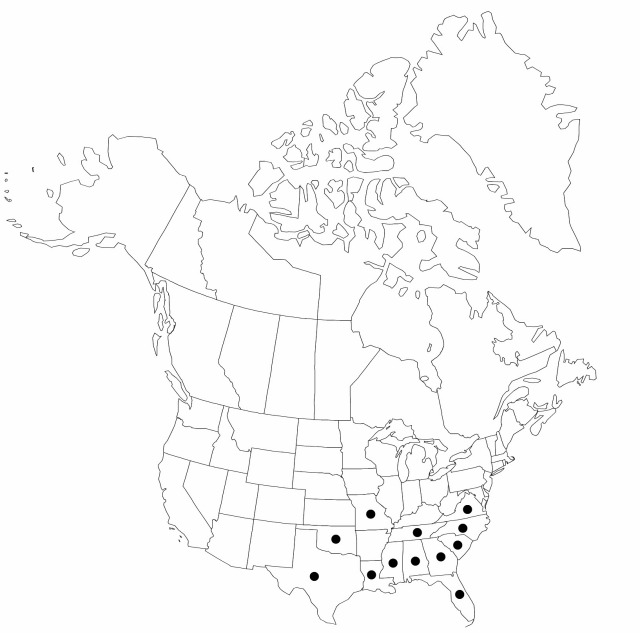Scleria ciliata
Fl. Bor.-Amer. 2: 167. 1803.
Plants perennial; rhizomes elongate, knotted, rather stout. Culms sometimes in tufts, erect, stout to slender or almost filiform, 20–70 cm, glabrous or hairy, especially on angles distally. Leaves: sheaths sometimes purplish, not or scarcely winged, weakly ribbed, densely pubescent or glabrous; contraligules subrotund to triangular, short; blades linear, keeled, obtuse, shorter than, equaling, or overtopping culm, 1–7 mm wide, ciliate or glabrous. Inflorescences terminal and axillary, fasciculate, 0.5–2.5 cm; clusters few-to-many flowered, 5–10 mm wide, each with 2–4 (–5) spikelets; axillary clusters sometimes on short erect to slender filiform peduncles; bracts subtending inflorescence leaflike, awl-shaped, to 15+ cm, often appearing to continuation of culm, conspicuously ciliate or glabrous. Spikelets bisexual and staminate, 4–8 mm; staminate scales lanceolate, membranous; pistillate scales ovate-acuminate, midrib conspicuous. Achenes whitish or often brownish gray, globose, 2–3 mm, base constricted, trigonous, apex usually umbonate, tuberculate or verrucose, rarely smooth, papillate at base; hypogynium golden brown, obtusely 3-angled border, supporting 3 yellowish, globose, spiculose or pulverulent, entire or 2-lobed tubercles.
Distribution

Ala., Fla., Ga., La., Miss., Mo., N.C., Okla., S.C., Tenn., Tex., Va., Mexico, West Indies (Cuba), Central America
Discussion
Varieties 3 (3 in the flora).
Selected References
None.
Lower Taxa
Key
| 1 | Culms, leaves, and bracts not ciliate, essentially glabrous. | Scleria ciliata var. glabra |
| 1 | Culms hairy; leaves and bracts ciliate. | > 2 |
| 2 | Widest leaves 1–3.5 mm wide; achenes 2–3 × 1.5–2.3 mm. | Scleria ciliata var. ciliata |
| 2 | Widest leaves 3.5–7 mm wide; achenes 2.6–3.6 × 2–2.6 mm. | Scleria ciliata var. elliottii |
"shortened" is not a number.